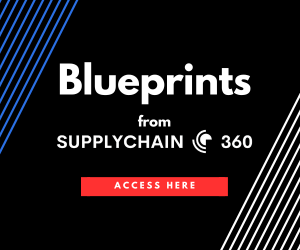Transportation Management Systems (TMS) have become a critical tool for companies seeking to optimize logistics. However, according to recent research conducted by Adelante SCM and Alpega, most companies are less interested in purchasing a TMS itself than in achieving specific performance outcomes. Rather than focusing on software features, companies are prioritizing their transportation key performance indicators (KPIs), such as reducing costs and improving service levels, as the driving force behind TMS selection.
The report also explores how the rapid evolution of generative AI could reshape the way companies select and deploy TMS, moving towards a more customizable, outcome-driven approach.
Generative AI’s Role in Tailoring TMS Solutions
Generative AI has emerged as one of the most talked-about technologies of the decade, particularly since the release of ChatGPT in late 2022. This form of AI can generate new content—including code—based on user input, which could extend into more complex tasks like developing TMS systems. The concept of generative AI being used to create tailored TMS systems based on predefined business outcomes isn’t far-fetched, especially as AI capabilities continue to evolve.
A 2024 report from Indago and Alpega reveals that if companies could input a set of desired KPIs into a generative AI tool to build a custom TMS, they would do so, rather than spending time drafting extensive RFPs. In fact, 56% of supply chain executives indicated they would prioritize providing a list of performance indicators over functional requirements. This shift underscores the industry’s focus on achieving measurable results, rather than simply acquiring new technology.
On-Time In-Full (OTIF) Dominates TMS KPIs
Among the most important KPIs identified by companies is On-Time In-Full (OTIF), which 60% of survey respondents selected as a top metric. OTIF has gained prominence, particularly in industries like Consumer Packaged Goods (CPG) and Retail, where delivering products on time and in full is crucial to maintaining strong supplier relationships.
Retail giant Walmart, for example, has stringent OTIF requirements for its suppliers, demanding that shipments be delivered 90% on time and 95% in full to avoid penalties. While these requirements have been slightly relaxed since their 2017 inception, the challenge for suppliers remains significant. Achieving these targets without advanced TMS features—such as load and route optimization or real-time freight visibility—can be daunting, especially for companies managing complex supply chains.
Yet, OTIF’s application is not without complications. As highlighted in a McKinsey report, there is no universal definition for OTIF, which can vary between participants in the supply chain. Differences in interpreting what constitutes “on time” or “in full” can cause inconsistencies in how performance is tracked and reported, complicating the deployment of TMS systems. For companies aiming to optimize performance, defining OTIF in a standardized way across the supply chain is essential for consistent improvement.
As companies look toward the future, the focus is clear: rather than buying technology for technology’s sake, they are seeking solutions that directly support their performance goals. Generative AI offers a glimpse of how technology might evolve to meet these needs, allowing businesses to tailor Transportation Management Systems to their unique operational objectives. However, ensuring success will require a more defined approach to measuring outcomes like OTIF, enabling a clearer path toward efficient, customer-centric logistics operations.








